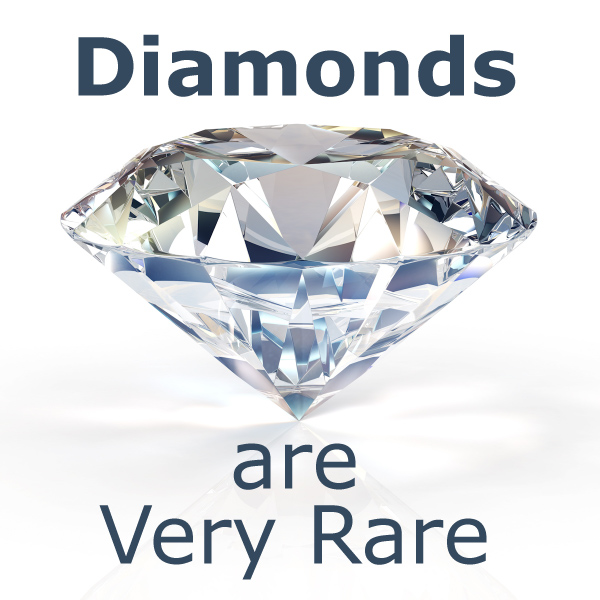Are diamonds rare?
Diamonds were once a rare commodity. Everything changed in 1867, when a 21-carat diamond was discovered in South Africa. Soon thereafter, South Africa became the world’s leading supplier of diamonds, increasing annual production by more than 1,000% over the following ten years.
The price of diamonds of course fell significantly during this period. The newly-formed De Beers Mining Company began acquiring mines and soon controlled a large portion (ultimately, about 90%) of the market. This enabled them to effectively set prices, rather than relying on market supply and demand economics. One way De Beers accomplished this was by stockpiling billions of dollars worth of diamonds then releasing them to the public in a slow trickle to maintain the illusion of scarcity.
De Beers still needed someone to buy their sparkly stones, which held little intrinsic value except for some limited industrial uses. They hired ad agency N.W. Ayer in 1938 to accomplish this goal. At this time, diamonds were thought of as mostly an extravagance of the very rich. In fact, before World War II, only 10% of engagement rings contained diamonds. N.W. Ayer launched a major marketing campaign to associate diamonds with love and marriage, convincing young men that it was the only way to properly express their devotion. Their publicists wrote newspaper articles about celebrity proposals, and they convinced fashion experts to promote the stones on radio programs.
Over the next four years, diamond sales in the United States increased by over 50%. “A diamond is forever,” a tagline launched in 1948, was named the number one slogan of the 20th century by AdAge. This catchphrase was mostly intended to stop the sale of used diamonds, which would have depressed prices. The retail markup on diamonds is so high that your purchase depreciates in value by about half the moment you walk out of the store. The “two-month salary guideline” was introduced in the 1980s, further increasing profits.
De Beers began to lose its dominant market share in the 1990s. Russia, which had previously sold all its production to the De Beers cartel, broke away after the collapse of the Soviet Union. Next, an Australian mine, the largest in the world at the time, followed suit, as well as other significant mines in Canada.
In the 2000s, multiple lawsuits were filed against De Beers, alleging an unlawful monopoly, a conspiracy to fix prices and misleading advertisements. This eventually resulted in a $295 million settlement and the liquidation of De Beers’ enormous diamond stockpile over the course of several years. Due to increased Asian demand, this supply increase resulted in only a relatively modest price decline.
After the stockpile had been exhausted, diamonds were once again subject to normal market pricing and in fact have actually increased in recent years. Even with De Beers’ reduced role (now around 30%), the lasting impact of their ad campaigns still continue to drive demand worldwide. Diamond miners, wholesalers and retailers have a vested interest in keeping prices inflated – not too difficult of a task since the public had long grown accustomed to paying top dollar for these “rare” stones.




